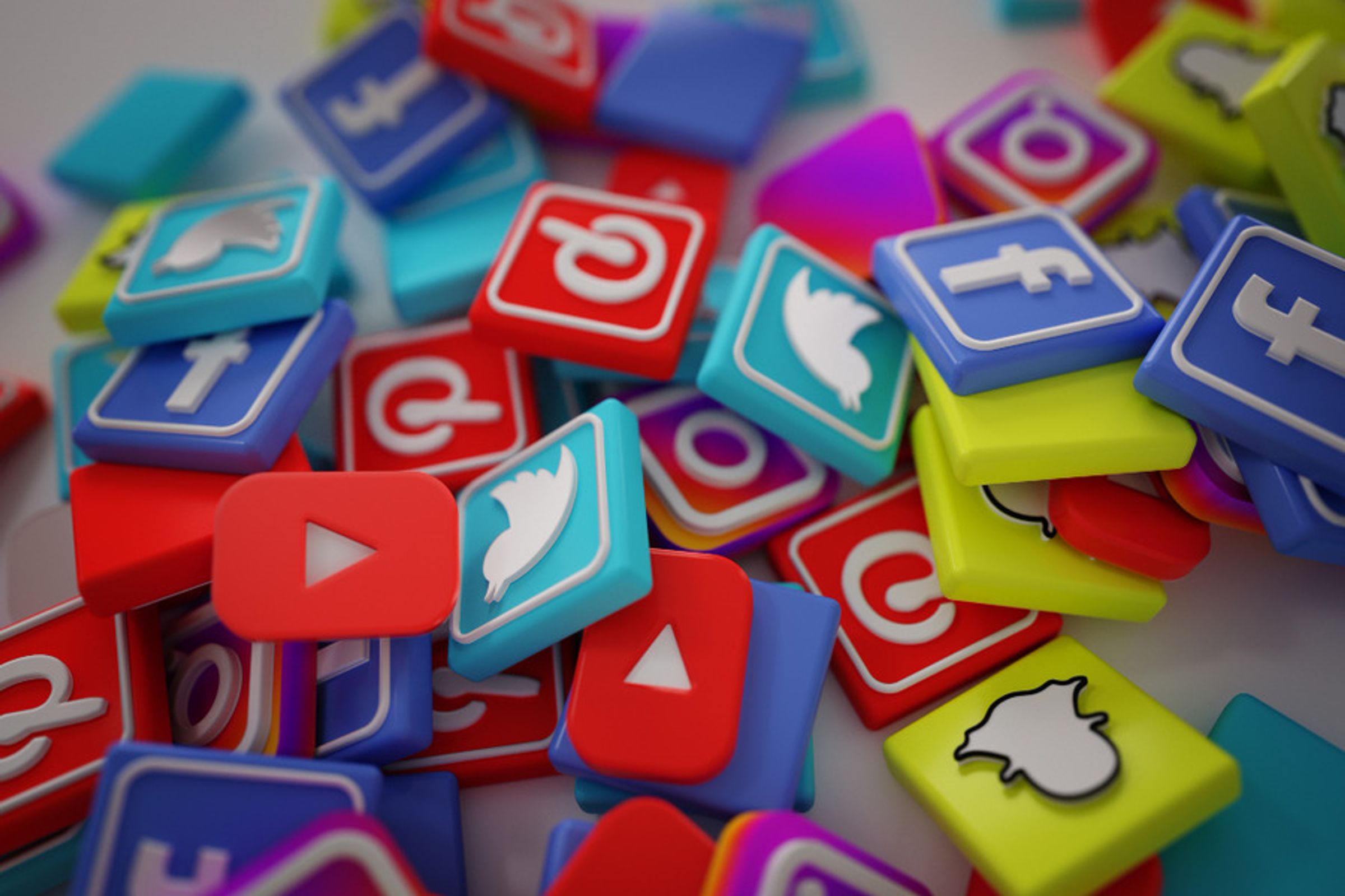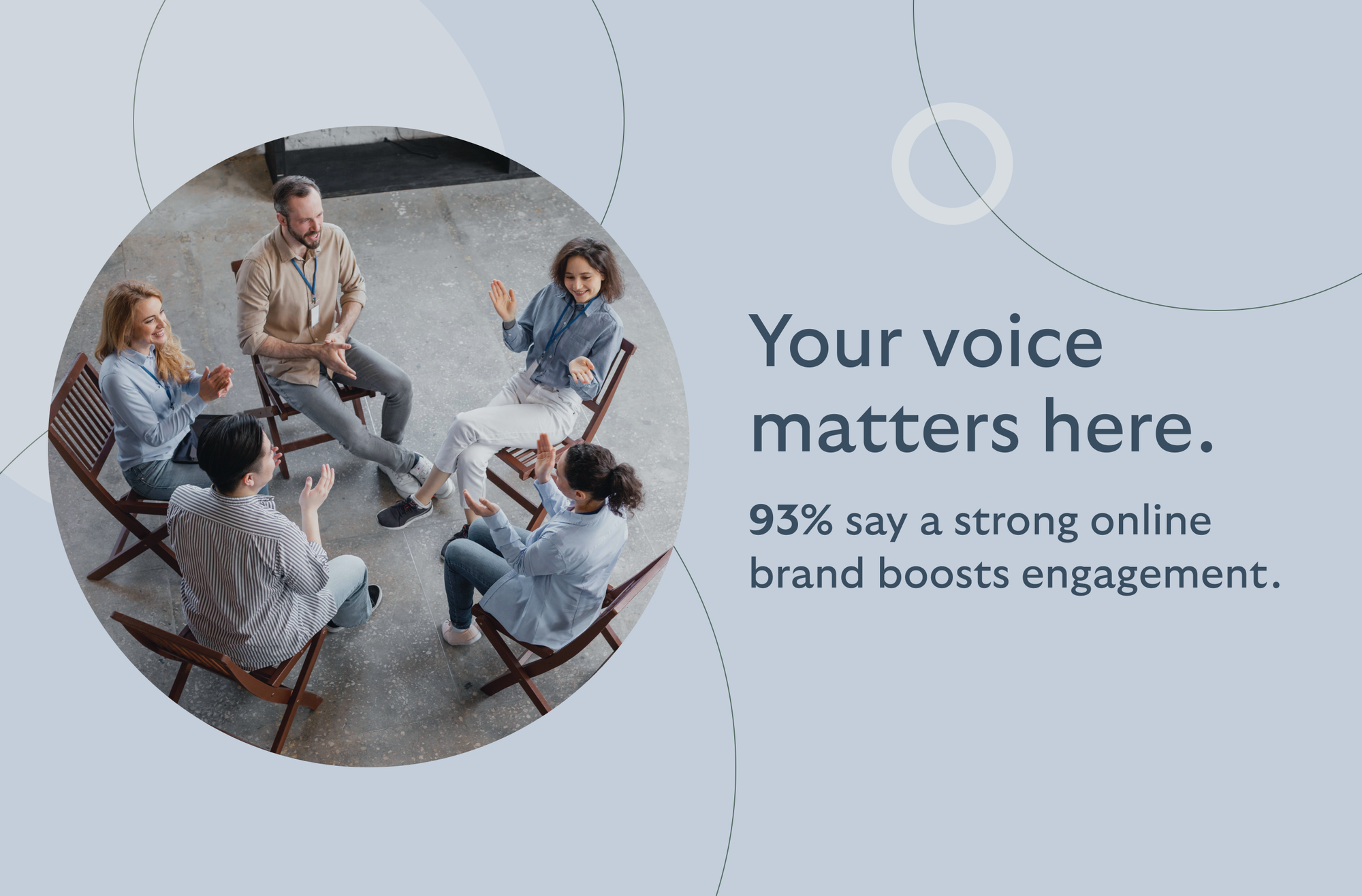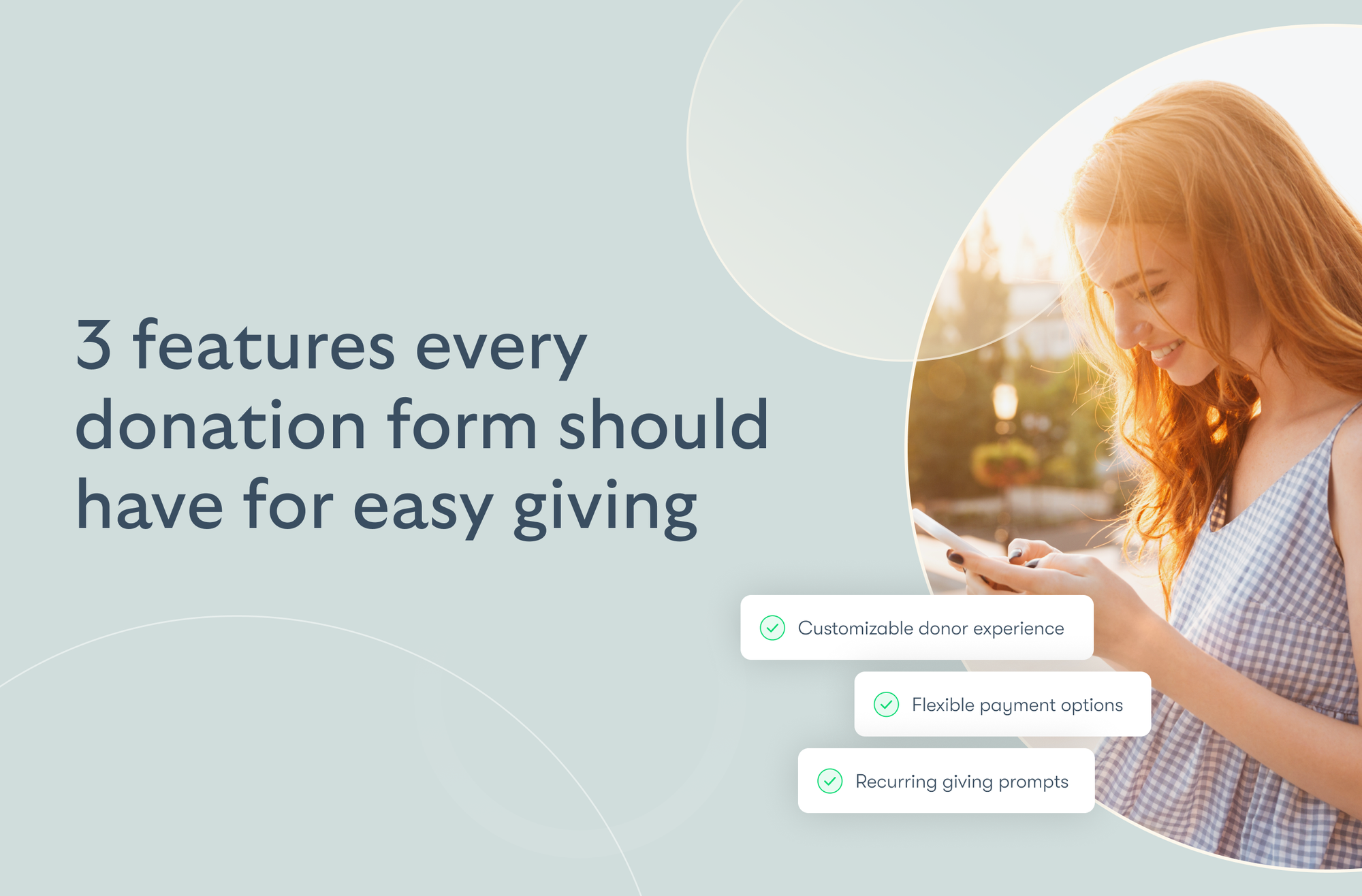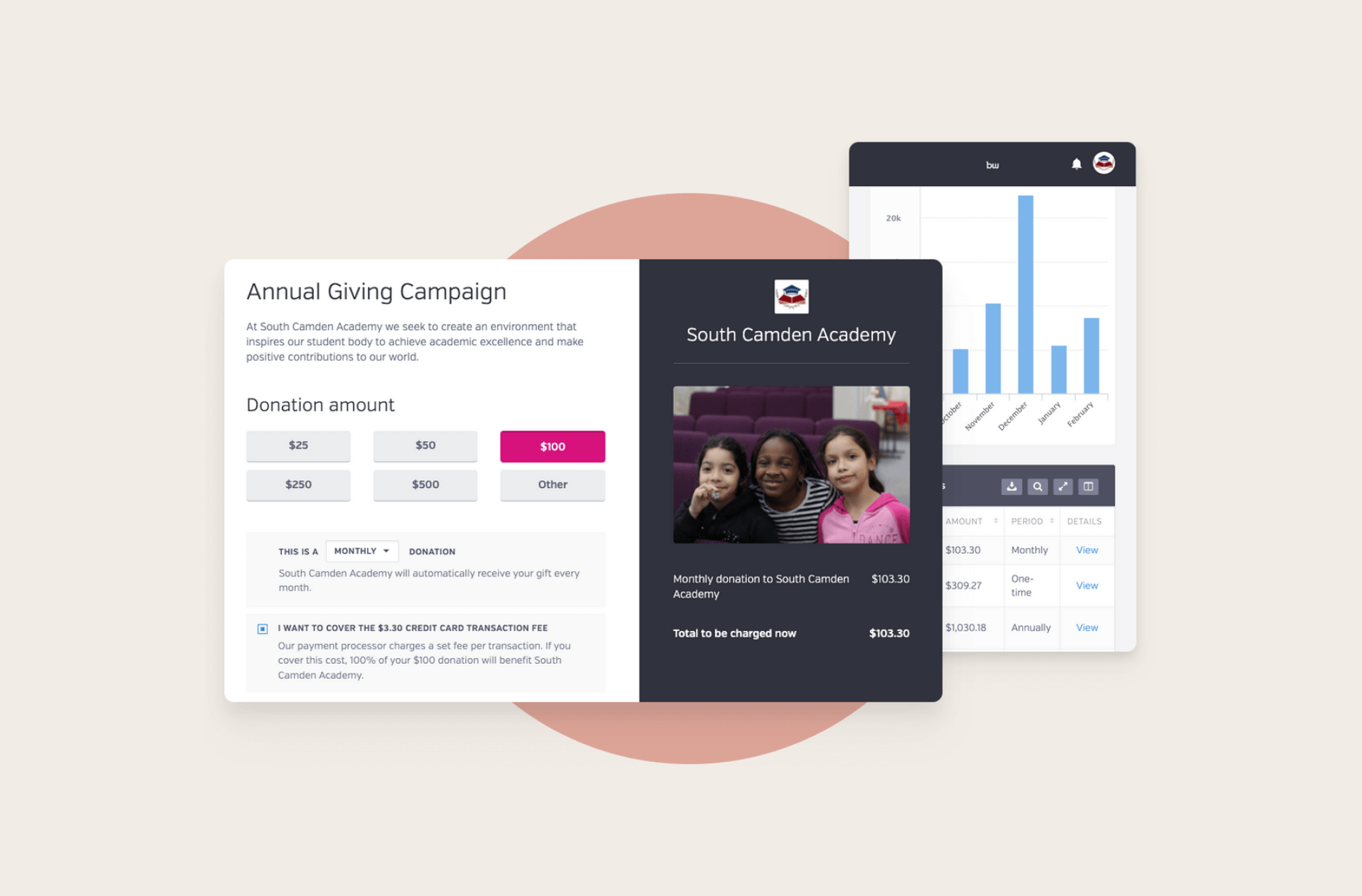Simplify donations with customizable default donation amounts
Streamline your processes and keep online and offline donations in one place
Engage with your donors with automatic updates
Give your donors the ability to donate once, monthly, or annually
How To Ask For Donations On Social Media?
By Colin Hunter

Did you know that, On average, a person spends 2 hours and 27 minutes daily on social media? With everyone using mobile phones and spending most of their time on social media apps, what better time could there be to ask for donations?
Social media gives you a platform to reach a wide audience, and with the right approach, you can connect with people who want to support your cause. Today, we'll go over how to ask for donations on social media, giving you tips and examples to make your posts engaging and successful.
If you're fundraising for a personal project, a charity, or a community event, these strategies will help you connect with potential donors and achieve your goals.
1. Understand Your Audience
Knowing who your audience is can make a big difference when asking for donations on social media. Since different people care about different things, how you talk to them about your cause should reflect that.
Here’s how you can better understand your audience and make your message more effective.
Knowing Your Target Audience
Understanding your audience helps you figure out the best way to connect with them.
For example, younger donors might prefer quick, engaging posts and videos on platforms like TikTok or Instagram, while older donors might appreciate more detailed posts on Facebook.
By knowing who you are talking to, you can choose the right words and the right social media platform to reach them effectively.
Tips for Identifying Potential Donors
To find potential donors on social media, start by looking at people who already follow you and interact with your posts.
Pay attention to who shares your content and who participates in your online events. You can also use social media tools to search for people who support similar causes.
Another good tip is to keep an eye on hashtags related to your cause to see who is talking about these topics and might be interested in donating.
Crafting Messages for Different Audiences
Once you know more about your audience, you can create messages that speak directly to them. Here’s how:
- For Young Adults: Use catchy images and powerful stories. Keep your messages brief and to the point. Make sure they can see the impact of their donation, maybe through a quick video or an infographic.
- For Professionals: Offer more in-depth information and statistics that show the seriousness and impact of the cause. LinkedIn can be a good platform for this group.
- For Older Adults: Focus on stability and the long-term benefits of their donations. Use platforms they are comfortable with, like Facebook, and provide detailed posts that explain the change their donation can make.
2. Set a Clear Goal
Setting a clear goal helps you keep track of your progress and shows potential donors exactly what you aim to achieve.
Setting a Fundraising Goal
Having a specific fundraising goal gives your campaign a clear target and helps donors understand how their contributions will be used. It makes the impact of their donations tangible.
For instance, instead of just asking for money, you're saying, "Help us raise $5,000 to buy new books for our local school." Clarity can motivate people to contribute because they see the direct benefits of their donation.
How to Choose a Realistic Goal
To pick a goal that is achievable, look at what you have raised in the past and consider what might be possible now. Think about the size of your social media following and how engaged they are.
It's also good to know how much similar campaigns have raised. Set a goal that challenges you but is still achievable based on your resources and the support you expect to receive.
Communicating Your Goal to Your Audience
Make sure your goal is front and center in all your social media posts about the fundraising. Use clear, simple language and visuals like progress bars or infographics to show what the money will do and how far you are from reaching your goal.
Update your followers regularly about the progress. Keep the momentum going and encourage more people to help as the goal gets closer.
3. Choose the Right Platform
Choosing the right platform can make all the difference in your fundraising. Each social media platform has its own audience and style, so knowing where your potential donors spend their time online is important.
Overview of Popular Social Media Platforms
- Facebook: Great for reaching a broad audience, including older adults. It allows for longer posts, event pages, and fundraising tools.
- Instagram: Perfect for a younger audience. It relies heavily on visuals like photos and videos. You can use stories and posts to engage users.
- Twitter: Good for quick updates and conversations. Hashtags can help your campaign reach beyond your followers.
- LinkedIn: Ideal for connecting with professionals and companies that might be interested in corporate giving or sponsorships.
- TikTok: Appeals to teens and young adults. Creative and fun videos work best here to catch the viewer's attention.
How to Choose the Best Platform for Your Audience
Think about who your donors are and what social media sites they use most.
For example, if your target donors are young adults, platforms like Instagram and TikTok might be the best choices.
If you are reaching out to a professional crowd, LinkedIn could be more appropriate. Consider where you have the strongest presence already, as this might give your campaign a head start.
4. Write an Effective Message
How you write your message can greatly influence the success of your campaign.
Use Clear Language
Use clear and concise language when asking for donations on social media. People should be able to understand your message quickly and easily.
Avoid using complex terms that might confuse your audience. Instead, speak directly and simply about what you need, why you need it, and what impact their donation will make.
Be Authentic
Authenticity builds trust. When your messages are genuine and transparent, people are more likely to believe in your cause and contribute. Share real challenges and achievements of your organization.
Let your audience see the people behind the project and the ones they are helping. Being open about where the donations go and how they will be used also reinforces this trust and encourages more support.
Tell a Story
Storytelling is a powerful tool for engaging donors.
A good story connects emotionally, making the cause more relatable. Share stories about individuals or communities who have been positively impacted by your work. These stories should highlight the change and the difference that donations can make.
Visuals such as images and videos are more impactful on platforms like Instagram and Facebook.
Provide Clear Instructions
Once you've engaged a potential donor with your message, make sure to guide them clearly on how to contribute. Provide easy instructions or direct links to the donation page.
Keep the donation process simple and straightforward. If donating involves complicated steps, you might lose their interest and their contribution.
Clear instructions remove any barriers for donors to complete their donations.
5. Timing and Frequency of Posts
When you're raising funds on social media, not only what you post matters, but also when and how often you post. The timing and frequency of your posts can greatly affect how many people see your message and respond to it.
Want to raise more Donations? Try BetterWorld’s Donation Tool for FREE!
Importance of Timing in Social Media
Posting at the right time can help ensure that more people see your posts.
Each social media platform has peak usage times when most users are online. Posting during these times increases the likelihood of engagement, as your audience is more active and more likely to see and interact with your content.
Best Times to Post on Different Platforms
- Facebook: Peak times are spread throughout the day. Generally, the best times to post are between 7 AM-9 AM, 1 PM-3 PM, and 7 PM-9 PM. The ideal time can vary based on when your specific audience is most active.
- Instagram: The optimal times for posting are usually between 10 AM and 2 PM on weekdays, with Tuesdays and Wednesdays being the best days for engagement.
- Twitter: For maximum visibility, the best times to post are midday from around 10 AM to 4 PM EST during weekdays, particularly in the early afternoons.
- LinkedIn: High engagement times are generally between 9 AM and 5 PM on weekdays. The audience of LinkedIn is most active during working hours.
How Often to Post About Your Fundraiser
You should find a balance in how often you post. Too many posts might annoy your followers, while too few posts might cause them to miss your message.
A good rule of thumb for a fundraising campaign is to post 1-2 times per day on your main platforms during the campaign period. You can increase frequency slightly when you’re close to reaching your goal or on special days like giving events or the campaign's last day to keep the momentum going.
Remember to also mix in regular, non-fundraising content to keep your audience engaged without overwhelming them with requests for donations.
Keep your followers informed and interested in helping your cause without feeling pressured or overloaded.
6. Use Visuals to Increase Engagement
Visual content is crucial in making your social media posts more engaging and effective, especially when you're asking for donations.
Use of Visuals in Social Media Posts
Images and videos catch the eye of your audience on social media. They stand out in busy feeds, making people more likely to stop and look.
Visual content can also be processed by the brain much faster than text, making it a powerful way to communicate your message quickly and effectively.
Ideas for Creating Engaging Images and Videos
- Use photos and videos that show the real impact of donations. For instance, if you’re raising money for a school, show happy students using new supplies.
- Share videos or photos that show the behind-the-scenes of your organization. Include volunteers working, events being set up, or staff members explaining their day-to-day tasks.
- If applicable, before and after photos can be very powerful in showing the direct result of donations and can motivate people to contribute.
- Use visuals to tell stories of individuals or communities your campaign has helped. A personal touch can create a strong emotional connection.
Using Infographics to Communicate Information
Infographics are an excellent tool for breaking down complex information into easy-to-understand visuals.
- Create an infographic that details where every dollar of donations goes. Remember, transparency can build trust and encourage more contributions.
- Use infographics to visualize your fundraising progress. For example, a bar chart showing how much has been raised versus the target can motivate donors to help reach the goal.
- Share statistics and stories about the impact of past donations in an infographic format. Show potential donors what their contributions could achieve.
7. Engage with Your Audience
Engaging with your audience on social media is not just about posting your needs. It’s about creating a conversation and building relationships that encourage continued support.
Importance of Engaging with Donors
Engaging with donors makes them feel valued and part of your mission.
It shows that you appreciate their support and are interested in what they have to say. With this approach, you can turn one-time donors into long-term supporters and advocates for your cause.
Tips for Responding to Comments and Messages
- Try to respond quickly to comments and messages. A fast response shows that you are attentive and care about your supporters’ input.
- Address people by name and personalize your responses to their comments or questions.
- Always maintain a positive tone, even if you receive negative feedback. Provide helpful information and solutions where possible.
Using Engagement to Build Relationships
Regular interaction helps build a stronger connection with your audience. Share updates about your projects and acknowledge the role of donors in your successes.
Invite feedback and ideas for how you can improve. Ongoing dialogue makes donors feel involved and invested in your cause.
Use Hashtags
Use relevant hashtags to increase the visibility of your posts. Hashtags can help you reach beyond your current followers to a wider audience interested in similar causes.
Apply general hashtags like #charity or #donations or specific ones tied to events or campaigns, such as #CleanWaterForAll or #EndHunger.
Engage Supporters
Encourage your supporters to engage in peer-to-peer fundraising. It means they fundraise on behalf of your cause.
Provide them with all the necessary tools and information to create their own fundraising pages. You can dramatically increase your reach and the total donations received with this strategy.
BetterWorld’s peer-to-peer fundraising software can be a lifesaver for this type of fundraising. Your supporters can create their campaign page within minutes and gather funds.
It is easy to use and totally FREE!
Go Live
Live streaming on platforms like Facebook, Instagram, or YouTube can significantly increase engagement. During live sessions, interact with your viewers in real-time, answer their questions, and explain the impact of donations.
Seeing and interacting with someone live can motivate people to donate as they feel a direct connection with you and your cause.
The Risk of Overlooking Social Media in Fundraising
Ignoring social media in today’s digital world can be a big mistake for anyone trying to raise funds.
Social media allows you to reach thousands, even millions, of potential donors worldwide with just a few clicks. It breaks down geographical barriers, making it possible for someone in a completely different part of the world to see your campaign and contribute.
Social media can also save you a lot of money compared to traditional fundraising methods like events or mail campaigns.
Furthermore, social media has the power to make campaigns go viral. A compelling story or an innovative fundraising idea can be shared quickly across networks, significantly increasing your campaign’s visibility and success.
Remember, regularly posting updates and engaging with your audience online creates a community of dedicated followers who can support your efforts over many years.

Join 100,000+ amazing nonprofits, organizations, and fundraisers on BetterWorld

Let our FREE fundraising tools help you raise more funds with less effort








